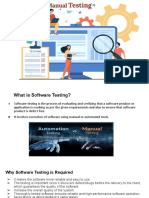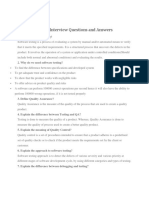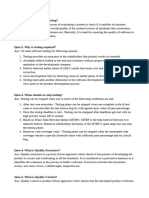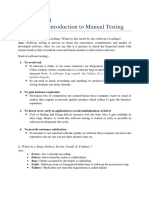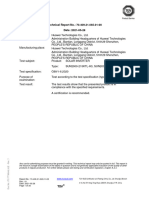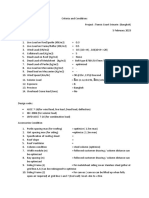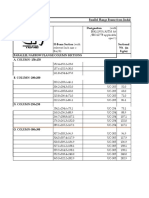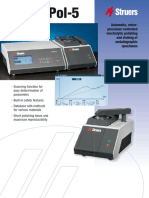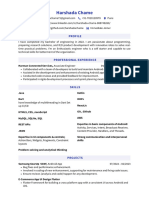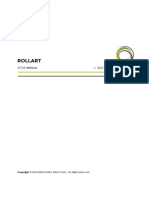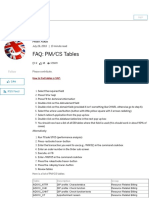0% found this document useful (0 votes)
6 views8 pagesManual Testing & SDLC Guide
The document provides a comprehensive overview of software testing, including definitions, types, and methodologies such as SDLC and STLC. It outlines key concepts like verification vs. validation, various testing types, and the software testing life cycle phases. Additionally, it discusses Agile methodology, risk management, and the importance of testing in ensuring software quality.
Uploaded by
divyavenkatesh1330Copyright
© © All Rights Reserved
We take content rights seriously. If you suspect this is your content, claim it here.
Available Formats
Download as DOCX, PDF, TXT or read online on Scribd
0% found this document useful (0 votes)
6 views8 pagesManual Testing & SDLC Guide
The document provides a comprehensive overview of software testing, including definitions, types, and methodologies such as SDLC and STLC. It outlines key concepts like verification vs. validation, various testing types, and the software testing life cycle phases. Additionally, it discusses Agile methodology, risk management, and the importance of testing in ensuring software quality.
Uploaded by
divyavenkatesh1330Copyright
© © All Rights Reserved
We take content rights seriously. If you suspect this is your content, claim it here.
Available Formats
Download as DOCX, PDF, TXT or read online on Scribd
/ 8































